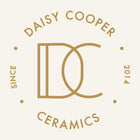Published in 2018, Picasso: Ceramics is a 120 pages book about the Spanish artist and his work on ceramics. It describes Picasso’s encounter with ceramics when he visited an exhibition on ceramics in Vallauris, France, in 1946, when he was already in his late years of life (65 years old).
The exhibition had such an impact on the artist that he soon moved to that same region in the south of France and became a regular at the Madoura ceramics workshop, where he observed and studied the process of ceramics making. This opened an opportunity for him to expand his artistic practice and work with new materials. He visited Madoura almost on a daily basis and learned from craftsmen about different decoration techniques and other aspects of ceramics production. He experimented with glazes, oxides, slips and other ceramic paints, and ended up producing a large body of work around these decoration techniques applied to ceramic plates, vases and more abstract objects. He would mainly take pieces manufactured at the Madoura studio and paint on them or alter their form to create sculptural pieces depicting his original graphic interventions.
What’s the book about?
Picasso: Ceramics talks about the artist’s approach to working with ceramics, his technical processes on applying drawings and painting to clay, his motifs and iconographic inspirations and an analysis of the anthropomorphic and zoomorphic ceramic sculptures that are so characteristic of his work. The book offers plenty of images, full page photos, and sketches that the artist would draw when planning his next pieces. Some photos also show him working at the studio.
The book is published by the Louisiana Museum of Modern Art and edited collaboratively by numerous authors.
The first chapter introduces us to the history of ceramic making in the Vallauris region and a wide description on how the Madoura factory used to work. How Picasso established a close friendship with Georges and Suzanne Ramié, founders of the Madoura factory, and how they encouraged him to work together with the factory’s craftsmen to learn everything about ceramics and create a new body of work.
The following chapters analyse Picasso’s iconographic inspirations and technical processes. After the last chapter we have around 50 pages of only images which offer a wide variety of the artist’s ceramic work.
What do we like about this book?
We like the fact that this book offers such a deep analysis and understanding of Picasso’s ceramic work and the history behind it. It really dives in the technical aspects which helps us understand and value his ceramic work in such a comprehensive way. Another aspect we love about this book is all the images and photos. They really show a wide range of Picasso’s work. Texts along the book are very well written and easy to read, giving a good compliment to the accompanying images. This is an inspiring book for anyone interested in ceramics, specifically in decoration techniques.
Where can you find this book?
You can buy Picasso: Ceramics in Australia at Booktopia , Mr Kitly bookshop or at Amazon.





